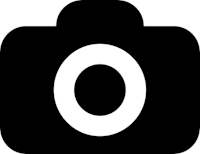How many times have you read or heard that the best focal length for Street Photography is 35mm? How about 50mm? Wider? Longer? The point is, everyone is an expert on the subject and every time you read it it’s a definitive “this is the best and no other will do” statement. Well guess what? They are wrong.
There have been many photographers who would have laughed in your face had you told them the only good Street Photography could come from a 35mm lens. Henri Cartier-Bresson was said to have shot so often with a 50mm lens that he could “previsualize” his photographs because he was so familiar with the size of the frame. Was he doing it wrong? The last time I read about Street Photography I was told that a 50mm is basically a telephoto lens and it wasn’t wide enough for good Street Photography!
The image at the top of the page was taken by famous Street Photographer André Kertész, known to me more recently from his book Andre Kertesz: Paris, Autumn 1963. Perhaps not as famous as Henri Cartier-Bresson but accomplished enough to have made it into several museums, newspapers, magazines, etc. well beyond his death in 1985. I want to share with you an excerpt from the book I mentioned above:
Since the early 1950’s in New York, Kertész had been photographing using a telephoto lens. Thus at a distance from his subjects, every day he would photograph passerby’s in Washington Square or people reading on their roof terraces from his apartment.
André Kertész: Paris, Autumn 1963 – p. 7 paragraph 1
If you continue reading you’ll find we aren’t talking about a simple 50mm lens here… This is a list of what he took with him to Paris:
3 Leica Bodies
1 35mm lens
2 50mm lenses
1 90mm lens
1 135mm lens
1 280mm lens
8 filters
1 tripod
André Kertész turns “conventional wisdom” upside down when it comes to focal length and really subject matter too, there is a large portion of his body of work that photographs subjects from behind (something veteran Street Photographed these days tell you is terrible).
The point of this brief article is to reinforce the fact that you can’t let others put your creativity in a box. If you want to shoot with a freaking telescope from your loft over New York City then I say go for it.
Of course, this doesn’t mean you won’t look like quite the tool walking around downtown with a giant lens on the front of your camera.
If you want to try a longer focal length for Street Photography I highly recommend the Nikon 85mm f/1.8G lens. This 85mm is not much larger than the current Nikon 50mm lenses out there and gives you noticeably more reach. Personally I bounce back and forth between 50mm, 35mm, and 85mm depending on which camera I’m using and where I’m photographing. If I know I will be in a busy crowd I will stick with my wider angle lenses. If I am just wondering around the city you’ll often find me with the 85mm lens attached to my camera.
So the truth about the best focal length is this; If someone tells you with absolute confidence that the only focal length for Street Photography is (insert focal length here) then they are living within the confines of their own creative box they’ve created. Ignore them and keep an open mind. Try various focal lengths in order to determine the best focal length to realize your creative vision.
There is no “perfect” focal length for Street Photography. I suppose you could borrow from a popular phrase and say; the best lens for Street Photography is the lens you have on you.
Top Image: Andre Kertesz – Circus, Budapest, 19 May 1920 (Wikipedia)







What about 75 mm 😉
Hmm… No, never the 75mm. lol, jk. Any lens will do!
Although I prefer “primes” for Street Photography (35mm usually) there’s no argument that one of the best rigs for the craft is the Fujifilm X-E2 and the kit 18~55/2.8-4 kit zoom (28~85 equivalence). Learn the angles of view of the zoom settings and previsualize your shot. Another excellent tool is the ultra small Panasonic Lumix LX100 that you can set to zoom in discrete jumps; 24, 28, 35, 50 & 75mm equivalences. The camera will keep the last zoom setting.